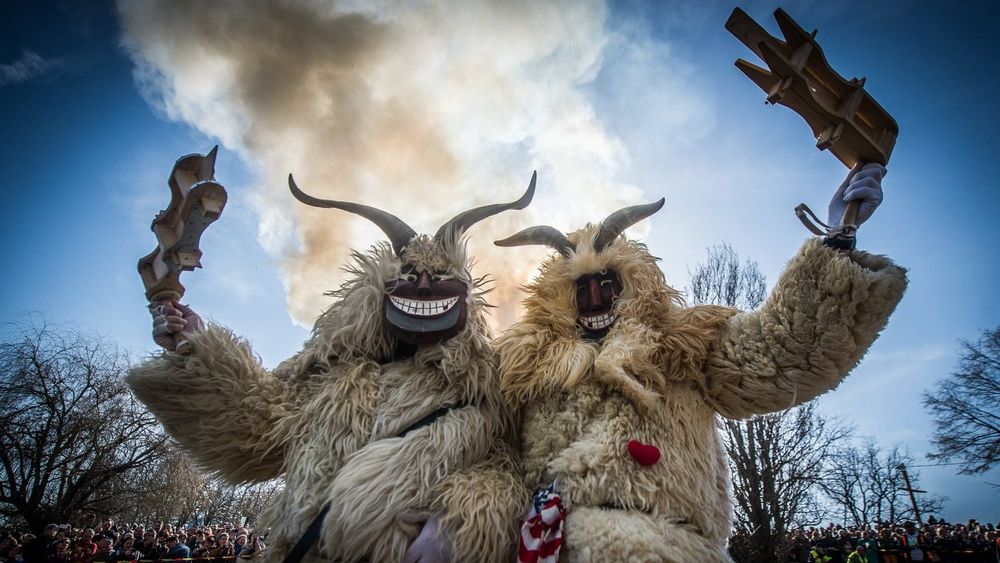The Mohács bus tour begins with the handing over of the renovated barn building, the KultúrKító, a carnival parade, and presentations by children's folk dance groups and bus groups. According to the organizers' previous statement, a record number of 2,200 masked and 70 bus groups will participate in the country's largest winter burial and spring welcome event, the tradition-preserving folk custom taking place between February 16 and 21.
On Thursday, the events begin at ten o'clock in the morning: with the participation of the students of the Famatyi Puppet Theater, the Vidák busó group and István Pávkovics, the cultural space created from a renovated barn building, the KultúKító, will be handed over, where visitors can later take part in ethnographic performances and handicraft sessions.
At two o'clock in the afternoon, the official stage opening takes place on Széchenyi Square, and then a carnival parade starts from Sokackör. In the streets and squares of the city, the free carnival of children's jankels and minibuses starts at three o'clock, then performances by children's folk dance groups and buso groups take place on the central stage, near which a demonstration of bus transportation equipment is also held.
According to tradition, the most spectacular programs of folk customs will be held on Carnival Sunday again this year. On February 19, the busos cross the Danube by boat, parade in the city center, float the carnival coffin, inaugurate new busos and light a huge bonfire in the main square of the city.
In many ways, extra caution is required at the event
Non-local visitors are expected to be the most numerous on this day and Saturday. From the early hours of the morning, they are welcomed with a folk art and craft fair, a busó mask and folklore exhibition, handicrafts, food tasting, concerts by tambura bands, and performances by folk dance groups, while more than two thousand masked people appear among the visitors all over the city center.
In order to ensure that the bus tour is a real experience for everyone from the first moment to the last, the organizers - as always - ask those coming with babies or children under the age of three to take into account: the event requires extra caution in many aspects.
On Saturday and Sunday, a serious crowd is expected to form in the city center, the clapper and the kolomp are constantly buzzing in the hands of buskers and visitors. Decorated horse-drawn carriages, tractors and other vehicles also travel among the people during the bus tour, while at the bonfire, there is a lot of smoke that people around the huge fire can inhale, as well as embers and ash can get on their clothes and skin.
Bringing a stroller into the crowd is especially dangerous, they pointed out, because due to the small hole drilled in the bus mask for the eyes, the bus has no field of vision, so it cannot see the objects and paraders next to it, below it, and above it.
In response to MTI's inquiry, the organizers previously announced that they expect a total of more than a hundred thousand visitors for the six days of the event, and 40-45 thousand on the special days - Saturday and Sunday.
Programmes
As part of the event, which is famous far and wide and is expanding with more and more programs every year, the visitors are mainly entertained with folklore shows, so the people of Mohács, who are traditionally preparing for the biggest local holiday of the year, welcome those who come to them with performances by folk dance groups, performances by buso groups, dance halls, and children's programs.
What is new is that on Sunday mornings at the Újmohács rév, guests are “offered” with show cooking and music by bus groups crossing from the island in boats in accordance with tradition, while some of the everyday dance halls accompanied by South Slavic music have been made rain-proof: wooden masked men dressed in badger furs also invite them to move in the covered area of the Mohács market interested parties.
Concerts for children are held on Saturday and Sunday mornings in the theater of the Kossuth Theater, while there will also be programs in the event hall of the Silk Factory Cultural Quarter, which was recently established on the banks of the Danube; on Friday, for example, a multi-girl beauty contest is held as part of the Anka ball.
We can also thank the superstitious Turks for the folk custom
The famous carnival event, which was settled by a group of people known colloquially as sokác, and among the people of Mohács as sokac, was first mentioned in a record from 1783.
According to a legend among the ethnic group that settled around Mohács during the Turkish subjugation from the Balkan region, their cunning ancestors fled from the Turkish occupation to Mohács Island on the other side of the Danube.
The multitudes returned after crossing the river wearing disguises, and attacked the superstitious Turks, who, terrified by the frightful masqueraders, fled the city headlong.
The traditional elements of winter hunting and spring greeting folk customs have remained unchanged for centuries: adults dressed in badger furs, linen coats, boskors, in carved masks, equipped with characteristic props - satchels, maces, lap clappers and columns - say goodbye to the harsh season and wait for spring.
In 2009, the UNESCO Educational, Scientific and Cultural Organization of the United Nations added the bus tour - as the first element in Hungary - to the representative list of the intellectual cultural heritage of humanity.
about this year's detailed programs of the folk festival, the approach to the locations, and parking information can be found on the www.mohacsibusojaras.hu and on the Facebook page called the Official Page of the Mohács Busójárás.
MTI
Photo: Tamás Sóki | MTI













